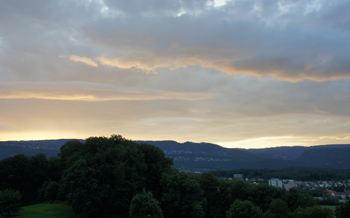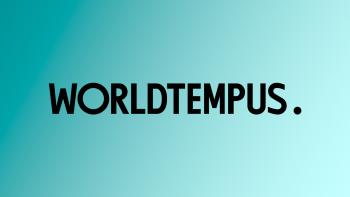After more than 300 kilometers traveled through the Jura by bike, watchmaking will never seem the same to the two journalist-cyclists who survived the voyage.
WORLDTEMPUS – 4 July 2011
Louis Nardin, translation - Elizabeth Doerr
Geneva and its Rue du Rhône is lined by watch boutiques that shimmer like pearls within an asphalt shell. The Jura is located just a bit to the north of this luxurious setting– a location that explodes with flowers during the warmer seasons and slumbers underneath a blanket of snow in the cold of winter.
These two worlds cohabitate and ignore each other at the same time, regardless of whether this is because of their geographies or the people who live there. The first, a tinsel town, is world-renowned. Fewer have visited the mountainous area of the Jura and are probably more familiar with the essence of the watches it produces: their prestige remains more often draped in veils of mystery – literally and figuratively.

SEE THE PHOTO GALLERY
Veloptuous Times was a seven-day undertaking comprising Anders Modig, editor-in-chief of Plaza Watch, and myself, responsible for the editorial content of Worldtempus. We took on the mission of getting to know the world of watchmaking in a different way: traveling by bicycle and camping in the wilderness of the geographic location home to horology. Different and original, the idea has generated considerable feedback, much stronger than anticipated. On the far side of the red carpet, this event was not tied to a gala and did not involve stars and deluxe boutiques. It became evident to us that luxury watchmaking is a part of the land it comes from. And, finally, it is important to note that the most inventive inventions and mechanisms are born among fir trees and the cows.
Slow Time
Time was obliged to pass slowly – mainly because our bikes more closely resembled miniature chariots than finely tuned sporting instruments thanks to the baggage they were made to carry. Thanks to the slow-motion tempo, the story of the industry surfaced much easier while traversing the lands. The swarming city, its financial activities, its neuralgic role within the business of trading and diplomacy – all of this belongs to the world of luxury that Geneva represents. Historically, the artisans working in the city were first known for their exceptional residences. Crossing the Mont Blanc bridge, one senses that this continues and that time for the reflection and meditation sometimes necessary for creating watches does not exist. As one moves away from the city, toward the nearby countryside, this changes. Even though urbanization progresses, there remain pockets of calm more conducive to designing movements. The greenness within which Jean-Marc Wiederrecht has surrounded himself in Meyrin is one example.

The city and its fanfare behind us, the rest of the trip takes place to the rhythm of the Jura's cadence. The first climb takes us to 1,000 meters, and here everything changes. The soft banks of Lake Geneva with their fields of grains undulating in the wind and the succession of opulent properties are replaced by primitive terrain. Here, the fertile land is less deep, the white chalk of the mountain frequently becomes visible and the rich vegetation puts down its roots. Cows reign supreme in their pastures. Nature is pristine, the air refreshing when cool, and time seems to have been suspended.
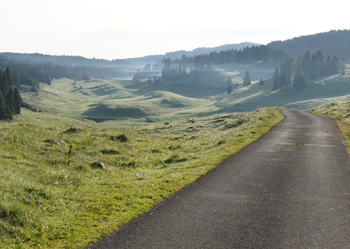
Emerald Lake
Descending to the Vallée de Joux, we took the route along the Marchairuz, allowing the bike to roll along the curves until we hit the immense plain surrounding a lake the color of an emerald. And as so often here, the rolling fog holds everything in suspension. Snatches of phantom figures mop up after a night of fresh air.
The Vallée de Joux lives cut off from the rest of the world. The nature and its calmness are omnipresent. And this almost magic serenity might be able to explain why men are driven to create the most complex miniature mechanisms known to horology. No horological complication is unknown to them; it is they themselves who have invented it.
 It is here, up high, where winter is long, rude and cold. Moreover, history created this community: the French Huguenots evading anti-protestant repression constituted the social core of the region. Carrying their horological know-how in their baggage, they searched out a place with conditions favorable to developing their art. All these elements are what made the Vallée de Joux a unique place, precious and sheltered from the rest of the world. The base instinct is not to produce quantity, but to create with much patience and within the confines of the rules of the art.
It is here, up high, where winter is long, rude and cold. Moreover, history created this community: the French Huguenots evading anti-protestant repression constituted the social core of the region. Carrying their horological know-how in their baggage, they searched out a place with conditions favorable to developing their art. All these elements are what made the Vallée de Joux a unique place, precious and sheltered from the rest of the world. The base instinct is not to produce quantity, but to create with much patience and within the confines of the rules of the art. Wooden Stairs
One stage of the route leads to La Chaux near l'Auberson, the home of De Bethune. Denis Flageollet and his team work in a building where the wooden stairs creak and where computers share workshops with the tools of yesteryear. Perpetually in action, Flageollet found his balance on this windy plateau. This Frenchman seems to claim the isolation away from the tumult of the cities as his own.
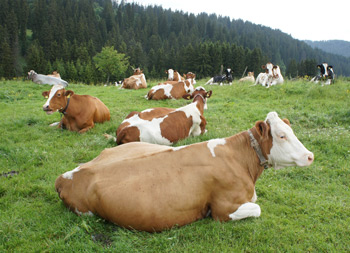
One constant companion of Veloptuous Times: all the researchers in watchmaking that we visited – Denis Flageollet, Kari Voutilainen, and Giulio Papi – have chosen to establish themselves, and remain, within the meandering Jura. Certainly, here they have also found qualified personnel and suppliers for their micro technical exercises. But here, they also live above all fulfilled lives. All of them appreciate the proximity to nature, walking, biking, and skiing in the natural environs. The tranquil environment also nourishes them. And speaking of nourishment, all these watchmakers have a penchant for good food – a predilection found within a simple and epicurean way of living.
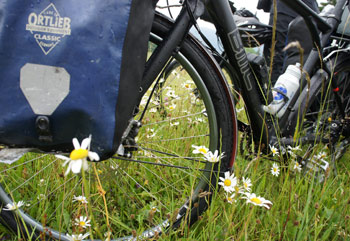
The Factories
The mountains surrounding Neuchâtel reflect a different sort of watchmaking. Here is where the world of large workshops – factories and mass production – commences. From Le Locle to Granges, the production lines hum. Complicated watchmaking also certainly exists here, but the dynamics are different and the artisanal touch is more often than not replaced by tools and machines. This is the land of companies in villas – in La Chaux-de-Fonds in particular – well endowed through their prosperity. Supplier workshops are much smaller, but often family-owned and specialized in one type of operation. Georges Cattin in Le Noirmont, for example, manufactures his cases all alone, using only machines without electricity.
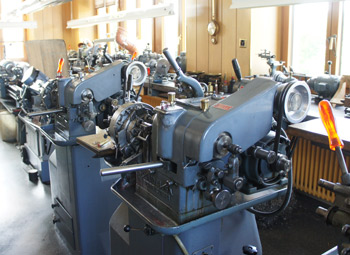
Veloptuous Times was also a journalistic challenge. Moving the cargo of material on two wheels for seven days all the while covering the current events of the trip and creating reports and interviews at the residences and places of work of our hosts was an exercise in R&D for an intense and passionate sort of journalist. The effort needed to get to know watchmaking from this angle gives it a whole different dimension. We sporty reporters veering off the beaten track may feel that the realization of a beautiful watch costs a great deal of time, energy and passion. Either way, we now feel closer to watchmaking thanks to these adventures that reflect on the daily strive to innovate, making sure that discoveries function, and creating beautiful and reliable products that will be distributed to the four corners of the world – sometimes on the wrists of people who are the most influential on this planet.
